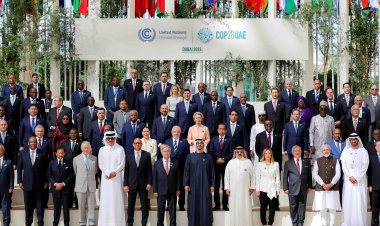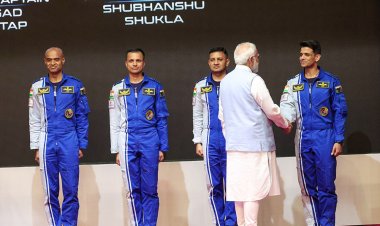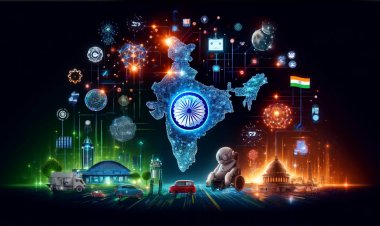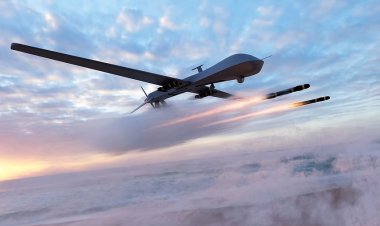US Hegemony Ends by Seppuku (Part 2)
The following commentary reflects on how China is slowly catching up to the USA in terms of AI technology and moving away from informatized warfare to intelligentized warfare. China is no longer in a position of technological inferiority and is slowly making its presence felt in the world.
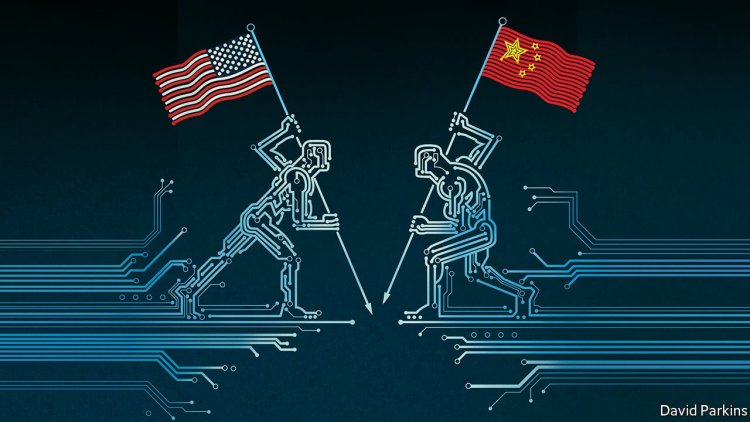
Commentary (Part two of a two-part series)
By Karsten Riise
This article is the second part of a 2 part series exploring the technological superiority of China over the US and how it is affecting US hegemony. Part 1 of the article can be accessed here.
4. Computerizing the OODA loop
The OODA loop conceptualized by Col. John Boyd stands for Observation – Orientation –Decision – Act. Sources I have seen point out that Col. Boyd was acutely aware that cognition, probably also intuition, creativity, and courage are embedded in OODA. Elements that are (still?) beyond machines. Col. Boyd wrote little; most of his insights are conveyed through his followers.
As Figure 1 below shows, the OODA loop includes fundamental human cognitive factors like "genetic heritage" (intelligence), cultural traditions, and analysis/synthesis (education). These are human domains.

Figure 1 – OODA loop. Source: Wiki commons
Figure 1 is only one of several ways to represent the OODA loop. Note how Figure 1 is a programming diagram. Something which Col. Boyd, not according to any source that I have seen, was aware of. Figure 1 eminently demonstrates that the OODA is also a theory for information processing and cybernetics, which is the domain of computers, robots, networks, and machines.
It is already recognized that "informatized" warfare includes computer networking and the fusion of data sources into the OODA loop. The consequence of the "intelligentization" of warfare further enhances the OODA loop by AI, quantum computing, and autonomous war systems.
Observation will be enhanced when AI systems work on data in new ways. This is not just about computing the trajectory of a missile fired. It is about creating new information based on existing information. And faster.
Orientation will be enhanced and automated by AI. With AI, a higher understanding will be possible, not only of a "battle-space", but of any action within a higher "conflict space" of global integrated politico-economic-social-IT-media-military interactions. In situations where humans are too slow or too narrow in processing capacity, computers may overtake. And where situations are too complex.
Decision is crucial. Where time is severely constrained, we must imagine that computers may take decisions at all levels. This is perhaps not something to wish for – but competition between powers may inexorably drive this development.
Action – AI will enable autonomous systems to carry out military action with little or no human intervention.
The OODA loop puts two problems in front of decisions makers at all levels. The most discussed problem (especially in military circles) is speed. It is widely held that the party can process the OODA loop faster than the opponent gradually wins by "folding the enemy upon itself". We can imagine a situation where the OODA loop in competition runs so fast on all sides of a conflict that human minds cannot handle it, and machines with AI take over.
But there is another element to the OODA loop, which Col. Boyd himself was acutely aware of – but which top decision-makers in military and civilian life often do not appreciate.
Some conflicts happen in "slow-motion". The Afghan war happened in slow-motion for 20 years. Despite all its think-tanks, "experts", computers, and physical power, the US has lost. This is about understanding, apprehending the whole of a highly complex situation with many dimensions. And the US simply has "blind spots" on many vital dimensions. Like religion, for instance. Or why many peoples do not appreciate being trampled upon by the USA. And if humans do not understand the vitality of a dimension, they will also not develop it into AI, and thus AI will not help them – or perhaps only "help" them to lose.
Col. Boyd was aware of the human dimensions. As an eminent fighter pilot in the Korean war, aerial combat gave Col. Boyd an intuitive and intellectual understanding of the complexity and fluidity of all types of combat at all decision levels. This is how Col. Boyd got his idea of the OODA loop. In Korea, the Russian MiG 15 had some superior technical capabilities to the US F-86 Sabre. But Col. John Boyd realized that the observation post (the canopy) of F-86 Sabre gave a better overview. And this better overview (Orientation + Observation) Col. Boyd leveraged by putting his MiG 15 opponents into situations in which Col. Boyd collapsed the opponent upon itself. Col. Boyd produced few books or articles, but slide presentations that Col. Boyd produced and testimonies from Col. Boyd's followers demonstrate this. Col. Boyd understood that conflict is not just about the military.
Thus, we come to a critical point: AI can perhaps help a "stupid actor" be stupid on a "higher level" – which may even be a strategic disadvantage. AI may even lead a "stupid actor" into mutual disasters. The USA in Vietnam and after 20 years in Afghanistan is a double case in point. In contrast, we must foster not merely intelligent but even wise decision-makers. And wise decision-makers can be further enhanced and even wiser with AI support.
We can see a possible future where the whole OODA loop at all levels – tactical, operational, strategic may be computerized. Put shortly: All levels and elements.
Imagine areas of battle not only fought by autonomous battle-robots (flying, sailing, rolling, walking, climbing, digging) - but even commanded by computers. And then take this to the leadership of the war.
It need not go all the way that far. But it can. Even when humans are put in to "steer" the machine-loop, this does not necessarily imply that human decisions will be of consequence. Because it might well happen, computers make "suggestions" that the human overseers lack understanding and too blind trust routinely "endorse". Five-star generals and Presidents can become human automatons who do what their machine-automats "prescribe".
5. Peace-War = Strategy-Tactic
Michel Foucault once said, "Politics is the continuation of war by other means." I ask that we expand our understanding even further.
War is not just the continuation of politics by other means, as Carl von Clausewitz posited. It goes both ways. Politics – and hence what is called "peace" – is often equally a continuation of war by other means. Clausewitz cannot stand alone – Foucault posits a double implication. We can go even further. The German philosopher Carl Schmitt observed that the "friend-enemy" distinction characterizes politics. We can thus speak of a Foucault-Schmitt-Clausewitzian nexus.
Peacetime is where potential military conflicts are often decided, even without firing a single shot. Sun Tzu wrote that the pinnacle of strategy is to win without having to fight. The power to build a far superior force in peacetime can create such an overwhelming superiority that it can impose its will on lesser powers without resorting to actual fighting. This is Beijing's approach to Taiwan. Translate this to my Foucault-Schmitt-Clausewitzian concept. Lifting Clausewitz' identification of the distinction between strategy and tactic, peacetime hence becomes the time for developing the "positioning of forces."
I then translate this further to a new understanding, in which peacetime is a strategic level, and war is a tactical level below peace. In peace, the war-defining strategic choices are made about which wars to fight (or not), when, how, and which resources, under which constraints, use which principles, and for what objectives. Wars then, when fought, feedback to this upper level.
AI thus has a political role to play, also to avoid wars. AI can assist in avoiding wars that cannot be won under acceptable conditions. AI can also assist in avoiding wars for objectives that can be achieved by peaceful means. AI can even assist by replacing illusory win-lose objectives with better and attainable win-win strategic objectives. This, however, requires wisdom – because prejudiced people will only enhance their prejudices and blind spots by implementing them into AI. Political systems, which, like in the USA, have an automatic inclination to "solve" problems by resorting to "wars-of-choice" will only be inclined to develop AI systems that feed them with even more disastrous "wars-of-choice".
That is the danger of AI. Like all technologies, AI has no ethics. No wisdom. No intuition to look beyond its limits. Technology's lack of morality rightly worried Carl Schmitt, who was among the first to point it out.
AI has the potential to put competing powers ahead of each other during peacetime. An obvious way is that AI can expand the economy – and thus increase the military-economic potential. In "peace time", AI can create disinformation campaigns and destroy the communication of own and other people and economies.
AI and "intelligentized" warfare as an idea also can create new conflict concepts, new weapons capabilities and shorten the development cycle for new weapons systems during peacetime. In other words, AI (and quantum computing etc.) can, during peacetime, create such overwhelming military advantage that war becomes superfluous against lesser actors. Say, it takes 25 years for the USA to develop a given new combat system. F-35 is such an example. The F-35 is not yet matured even after 25 years of development, and it is planned to be active for another 40 years, bringing the whole US combat aircraft development cycle up to over 60 years. As a thought example, AI might shorten the next cycle of that combat system with new materials, new production methods, and so to a period of (say) 5 years. In such a case, the maximum power of AI can create 5 (or 12) weapons-generations while the USA for 25 or 60 years only created one.
For China, AI will further build on China's undisputed strength as the "factory of the World". China has unique opportunities to combine AI, quantum computing, self-designing product design, and next-generation production methods (3D printing is only the tip of a new revolution).
6. US Hegemony Ends by Seppuku
So, how does China finance and create the preconditions for such an ultra-fast technological development? China does this by having by far the world's biggest CONSUMER market for ALL kinds of technology & intelligence products: Cars, smartphones, laptops, networks, Internet-of-Things (IoT) etc. China also has the world's biggest market for AI and robotics in factory-automatization.
In comparison, let us now look at the US. The official US defence expenses were USD 885.6 billion in 2020. In comparison, the global car market that same year was USD 20,321 billion – or 23 times more than the US defence budget. And the car market increases faster. In 2025, the global car market will be USD 25,719 billion. And nearly all of that growth will be not in the USA or the EU, but (you guessed it right) in China. In 2019, US car sales were only 17% of the world market. The EU was also 17%. China was leading with 25%. India had 4% - but in the long term, India and Africa have the same potential as China.
To get an idea about the immense amounts of money we talk about here, let us, for simplicity, assume that all cars had the same average value, and the market shares were the same in 2020 (though China grows faster). In this rough example, China's 25% of global car sales thus translate to USD 5.1 trillion. The US car sales of 17% globally only translate into USD 3.5 trillion. The difference is probably more minor in practice, but that will change as the Chinese become more affluent. The EU will participate in the Chinese car market, especially with the EU pushing for the Comprehensive Agreement on Investments (CAI) with China. The EU must invest in building its car factories in China to participate in China's continued car boom.
By choosing not to participate in the Chinese car market, the USA chose not to share potentially USD 5.1 trillion cash-flows to help develop AI and other militarily necessary technologies. This will only worsen for the USA over time. The US car market is stagnant. US carmakers can even hardly sell their inferior products in the EU. The EU car market, which equals the US in size, is stagnant too. India's car market is still only 4% of the global market share. China's and India's car markets can easily double, but China will be the overwhelming driver in terms of amounts of money for the mid-term future. A further comparison: The total US GDP in 2020 stood at USD 20.9 trillion.
A significant part of military expenditures is for people, many of whom just do nothing but "keep watch". In FY 2020, only USD 247.3 billion (28%) of the total official US military expenditures were for acquisitions, and direct outlays to finance military product development. Compare US military acquisitions of USD 247.3 billion with a Chinese car market of potentially USD 5 trillion.
Self-driving cars communicating with each other, with other traffic units (including pedestrians), and intelligent infrastructure is also one of the fastest-growing areas for AI. Cars – just like war – are being "intelligentized". Electrification of cars, the development of new materials for batteries (which requires quantum computing) and balancing the fluctuation of eco-energy sources (sun, wind) into the energy net all require AI. My confidential sources in Huawei have confirmed that they have just entered the car market with IT products. Self-driving "intelligentized" car technologies can quickly be transferred to "intelligentized" war. Self-fighting air combat systems, submarine drones, autonomous tanks, drone-swarms, satellite and other sensor surveillance & imaging etc.
I can continue this with the example of wireless consumer products. The most advanced chips are not developed for the military – they are for smartphones. Smartphones drive the 3-5 nm chips. Smartphones also drive the development of "systems on chip" (SOC). Again, we see that the consumer market, not the military, drives the vast range of technological development.
China is again the leader – by far. In 2019, China had 36% of sales out of the 20 leading smartphone markets. India is number two with 15%. The USA is only number three with 11%. Russia, Iran, Indonesia and Brazil each have 4%. China, India, and Africa will be the commercial drivers of new AI, quantum, chips, chemical, biological, and space-based technologies for Smartphones, cars, and many other products and services for consumers, industries, and farming. By banning Huawei, the USA cuts itself. China does not need the US market for smartphones. The US needs China.
Already nuclear weapons were so expensive that their production on a scale after 1945 was entirely on private consumption (nuclear electricity). Even today, the US Defense Department does not finance US nuclear weapons – the US Department of Energy does. The military does, of course, drive the front of a range of technologies, especially in aerospace. But the vast number of technologies that the military depends upon – like AI and the miniaturization of computer systems is driven by the civilian sector.
That is also the whole military point of commercializing space travel, space-transport of goods, and space-services –US-based companies like SpaceX, Starlink, Blue Origin, Kuiper Systems, and VirginGalactic. Jeff Bezo's Amazon is already the biggest supplier of centralized computer services for the US security complex. The US military has also financed the development of US commercial re-use space technology by paying SpaceX a premium price to have military satellites sent up with the first use of re-useable SpaceX rockets. Space tourism and even movie-making at the edge of space and even to the Moon and Mars serve the same commercializing space.
By commercializing space, the amount of money available to accelerate military relevant tech development increases by a factor of 10 – 100. Furthermore, unit costs go down, and the quantity of available capacity in infrastructure to overwhelm an opponent in space and cyberspace increases similarly. Civilian commerce overtakes military expenditures. AI and tech development depend on such enormous financing that the military (or even the US government) alone cannot finance it. Only mass consumption can. And importantly, mass consumption in the US market and mass consumption on a fully global scale, including China.
State subsidies alone cannot reverse this strategic condition. A new White House paper states that the US has no complete leadership in chips. The USA does possess some leading technologies for building chip factories, but the US does not possess all of the leading technologies in chips. The US is definitely far from the forefront of leading chip production - especially in the sharp front edge of 3-5 nm chips. US chip production will get a boost with USD 88 billion of tax-payer subsidies.
But USD 88 billion in US government subsidies will not save the USA in the chip and AI race. US chip subsidies will be a bottomless hole because, without the superior size of the Chinese chip market, the available market for US chip producers will be too small to keep up with China sustainably. Although China in the chip sector is not yet on the front edge, China cannot stop getting there. For China, subsidies to get chip production to the leading edge do not need to be never-ending. Once China, with subsidies and other state methods, China has brought her chip sector to the leading global edge. China can let China's leading commercial market take over as a demand-driver and finance source.
China will win long-term because China is in a superior position. China has by far the most significant tech consumer market to finance the immensely costly long-term development of AI, quantum computing services and the like. Yes, quantum computing will, of course (like everything else), also be channelled into commercial products and services for mass consumption, and that will accelerate the whole AI and quantum development to a new level. China not only has herself the most prominent consumer tech market. China even participates in all tech markets globally except the minor exemption of the USA, which only has 17% of global car sales and 11% of Smartphone sales.
By its own isolationist decisions, the USA is committing technological suicide in a slow, painful but sure way by cutting itself. Such a deadly self-cutting is called Seppuku. The USA cuts itself out of the world's most extensive IT, AI, and quantum computing commercial potentials. Biden simply continues the slow suicide in militarily relevant commercial technologies started by Trump.
China is only the worst example of what the USA does to kill its tech industry slowly. The USA also kills its leading industries by not joining CPTPP, by not joining the TPP, by diminishing the NAFTA into the USMCA, by not making a big trade deal with India and Mercosur. The USA cuts itself out of a combined East-Asia-US-EU-UK-India-South America-Africa super mass-consumption market necessary to finance a sustainably leading tech sector.
US hegemony ends by Seppuku.
That's the angle.
Karsten Riise is a Master of Science (Econ) from Copenhagen Business School and has a university degree in Spanish Culture and Languages from Copenhagen University. He is the former Senior Vice President Chief Financial Officer (CFO) of Mercedes-Benz in Denmark and Sweden. At the time of appointment, he was the youngest and the first non-German in that top position within Mercedes-Benz’ worldwide sales organization. He writes regularly for the Russian International Affairs Council.
Disclaimer: This paper is the author’s individual scholastic contribution and does not necessarily reflect the organisation’s viewpoint.

